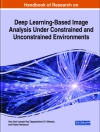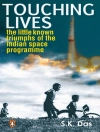Overuse of natural resources results in environmental deterioration, lowering the effectiveness of important ecosystem services, such as the mitigation of floods and landslides. This leads to a greater risk of disaster and, in turn, natural hazards that can further deteriorate the environment. The deterioration of the capacity of the environment to meet social and ecological aims and demands is described as environmental degradation. This degradation and the concomitant reduction of ecosystems and their irreplaceable services (the benefits humans gain) are driving disaster risk. Changes to the environment can alter the frequency and intensity of risks, as well as our exposure and sensitivity to these hazards. Addressing these issues requires improvement of the capacity to perform short and medium-term operations in disaster management based on long-term environmental considerations. At the local level, minimizing environmental degradation and ecosystem loss involves awareness of the links between unsustainable development and poverty.
Communities are often driven to ruin their natural environment as a short-term coping mechanism for dealing with immediate issues; for instance, surviving a bad harvest by selling wood. Strategies for decreasing poverty by investing in environment-sensitive development should therefore support initiatives to minimize disaster risk and build resilience. There are common aspects in successful policies throughout various regions at the policy level, which extends to controlling climate change. Tools such as integrated water resources and coastal zone management, the removal of environmentally harmful subsidies, especially on fossil fuels and/or carbon taxes, renewable energy, marine protected areas, and cross-boundary biodiversity conservation, are all examples of policies used in more than one region but customized to each context. This scoping study finds and assesses available materials that relate environmental challenges and management with catastrophes and risk reduction activities in the Asia-Pacific area. This volume’s analysis relies on case studies, examples, and the results of questionnaires and interviews of practitioners and organizations operating in the environment, disaster, and development domains.
Tabela de Conteúdo
Editorial xi
Preface xiii
Acknowledgments xvii
1 Assessment of Changes in River Morphology Due to Illegal Sand Mining by Geospatial Techniques 1
Saurabh Singh, Deepak Kumar Prajapat, Vikas Pandey, Rajat Agrawal and Jerripotu Gopala Rao
2 Feasibility of Solar Power Generation Potential in Una, Bilaspur, Solan, and Sirmaur Districts of Himachal Pradesh Using Geospatial Techniques 13
Lalit Jain, Krishan Chand, Rohit Chauhan and Brijesh Saklani
3 Assessment of the Drivers of Domestic Water Consumption Pattern in Growing Population of Idah LGA, Kogi State, Nigeria 39
Ogunkolu Ayodeji Bolade, Ogbole Moses, Stephen Favour Ojonuba and Oyetunji Adewale Bashir
4 Disaster Risk Reduction and Risk Management: A Conceptual Framework 61
Fouzia Rahman
5 Impact of Environmental Degradation and Disaster Happenings on Human Health 75
Kishor Kumar Anand and Sanjay Kumar
6 Impact of Development on Environmental Degradation: An Indian Diaspora 85
Rekha Vishwakarma
7 Food Crisis During Covid-19 Pandemic Among Migrants: A Study With Reference to Rohtak City (Haryana) 97
Vinod Kumar and Nitin
8 Crime Against Women in Patna and Its Environs: Degradation in Social Environment 109
Vimlesh Kumar
9 Expansion of Irrigation Facilities and Its Impact on Cropping Intensity: A Spatio-Temporal Analysis With Reference to Haryana 121
Neeraj
10 Dwindling Forest Cover and Environmental Degradation: A Case Study of Bihar 131
Vinita Prasad
11 Environment and Sustainable Development: Issues and Challenges 139
Anshu Veenapani
12 Government Programs and Policies Towards Green Environment 145
Suraj Dev
13 Use of Geospatial Technique in Urban Flood Hazard Management 155
Pallavi Tomar, Suraj Kumar Singh, Shruti Kanga, Amitanshu Pattanaik and Gowhar Meraj
14 Impact of Urbanization on Infrastructure and Environment of the Cities in Bihar 169
Anshu Veenapani and Sharat Chandra
15 Uses of Wi-Fi Technology and Its Effects on Social Life 177
Vishal Kumar
16 Application of Remote Sensing and GIS in Disaster Management: An Applied Review 191
Sadaf
17 Population Change and Its Impact on the Shortfall of Groundwater: A Case Study of Berhampore in Murshidabad, West Bengal 207
Subodh Singha and Harsha Kumar Das Gupta
18 Development of Future Rule Curves for KLRS Pulichintala Reservoir Operation Using SWAT and GA Models 219
Jerripotu Gopala Rao, Saurabh Singh, Bishnu Prasad Panda, Deepak Kumar Prajapat, Sujeet Kumar and Azmeera Balu
19 Understanding the Relationship Between River Health and Society for River Restoration: A Review 229
Pradeep kr Shrivastava, Deepak Kumar Prajapat and Saurabh Singh
20 Geospatial Mapping of Groundwater Potential Zones Using Multi-Criteria Decision Making AHP Approach in a Pisangan Watershed, Ajmer District (RAJ.) 241
Shilpi Yadav and S.S. Khinchi
References 259
Index 261
Sobre o autor
Sanjay Kumar, Ph D is an associate professor and assistant coordinator at Nalanda Open University and the Study Centre at Maharaja College, Ara. Over his tenure, he has attended several workshops, national and international seminars, quality webinars, and faculty development programs and during COVID-19, he delivered online lectures on different topics hosted by different institutions. He serves as one of the team members for curriculum design for the Master’s Geography program at Indira Gandhi National Open University, New Delhi and the Bachelor’s and Master’s Geography programs in Bihar.
Suraj Kumar Singh, Ph D is a National Service Scheme program officer at the Central University of Jharkhand and a coordinator at the Centre for Sustainable Development, Suresh Gyan Vihar University, Jaipur. He has 12 years of teaching and research experience in waterlogging and flood hazards, geospatial applications in water resources, disaster management, hydrogeomorphology, urban planning, and wasteland mapping.
Shruti Kanga, Ph D is an assistant professor and head of the Department of Geography, School of Environment and Earth Sciences, Central University of Punjab. She has 12 years of teaching and research experience in the area of forest fire risk modeling and management, tourism, and resource management. She has also attended and organized 35 national and international conferences.
Gowhar Meraj, Ph D is the principal investigator of the Department of Science and Technology, Government of India where he assesses the impact of climate change on the critical ecosystem services of the Kashmir Valley. More specifically, he is working on INVEST modelling for assessing sediment retention services, water yield services, and habitat quality in the Kashmir Valley. He has more than 40 research publications and serves as an editor for several additional publications.
Majid Farooq, Ph D is a scientist in the Department of Ecology, Environment and Remote Sensing, Government of Jammu and Kashmir, India. He has more than 15 years of experience in research, teaching, and consultancy related to remote sensing and GIS. In addition to his experience, he has more than 25 publications in various international and national journals.
M. S. Nathawat, Ph D is a scientist of international repute. He has more than 150 publications in various international and national journals and has guided more than 50 Ph D and masters students. He is also a member of expert committees in various national bodies.












